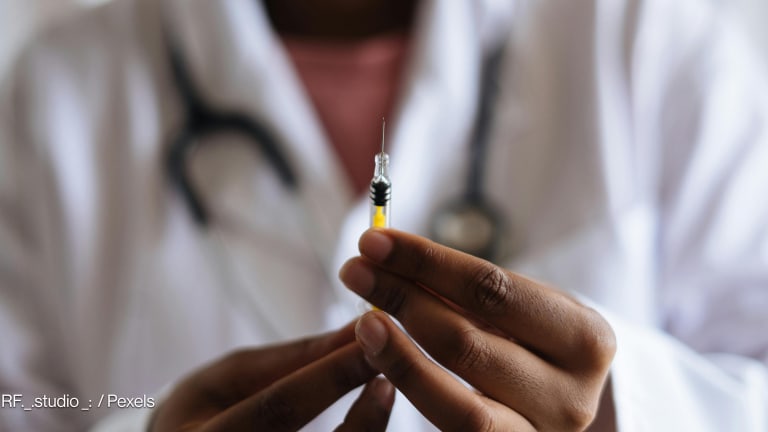
When Wasiu spoke to Devex in 2018 about his HIV-positive status and the statuses of his three wives, the two living with him in Nigeria had tested positive for HIV while the one in the United States was HIV-negative due to distance and her ability to access preexposure prophylaxis, or PrEP.
Two years down the line, Wasiu — whose name has been changed to protect his privacy — has married a fourth woman, with whom he is sexually active. She has not contracted HIV because she is able to access PrEP in Nigeria. Wasiu is also taking his antiretroviral drugs regularly.
“In my relationship, we have two persons [wives] living with HIV and two persons that are not. But we are all taking our respective drugs, and we are helping one another to continue to do so,” he said.
When Wasiu and his two wives first tested positive for HIV, PrEP was not widely used in Nigeria, with just about 400 people having accessed the drugs. But two years later, this number has grown to nearly 32,000.
In fact, within several countries across Africa, PrEP is being rapidly rolled out at a higher rate than in higher-income nations. Health experts have attributed the increase in uptake to the introduction of more channels of delivery and urged governments to continue to promote avenues for access.
“Differentiated delivery models have been quite successful at reaching users of PrEP. … I think it will accelerate uptake.”
— Kate Segal, program manager for product introduction and access, AVACAt the recent HIV Research for Prevention Conference, AIDS Vaccine Advocacy Coalition revealed that sub-Saharan Africa has substantially expanded PrEP access from about 4,000 initiations in 2016 to over 500,000 in 2020.
Scaling up HIV prevention measures has been at the core of the prevention policies of most African countries. Eswatini has the highest HIV prevalence in the world, with over 27% of adults living with the virus. The country, which has a population of less than 1.2 million, has seen 14,554 people access PrEP — more than Canada, Germany, the Netherlands, and China.
South Africa, Kenya, Zambia, and Uganda have had the highest number of PrEP initiations on the continent, but several other countries are recording very sharp increases.
Between the second quarter of 2017 and the end of 2020, the number of PrEP initiations in Lesotho grew from 788 to over 32,000. Over the same period, initiations grew from 14 to over 30,000 in Namibia and from just one to over 5,000 in Rwanda.
The popularity of PrEP among African countries does not come as a surprise to key stakeholders. In a statement, the World Health Organization’s Regional Office for Africa said countries such as Eswatini found ways to connect various HIV services.
“HIV services at the community primary health care clinics were linked with HIV prevention activities,” WHO stated.
Kate Segal, program manager for product introduction and access at AVAC, attributed the increases to early adoption, governments’ commitment to scaling up access, and the provision of several avenues for access. She added that the number of PrEP users in Africa will further increase when more channels of delivery are made available.
Segal said that access needs to go beyond delivery via health facilities focused on HIV services to “delivering PrEP in integrated settings, via youth-friendly services, including multiplex dispensing — approaches that bring PrEP closer to the user.”
“As we've seen this past year — amid the COVID-19 pandemic in particular — differentiated delivery models have been quite successful at reaching users of PrEP. … I think it will accelerate uptake,” she said.
African countries with the highest number of PrEP users are also the ones with several avenues of access. Out of the nine service delivery options monitored by AVAC’s Global PrEP Tracker, Kenya is already deploying seven: mobile clinics, family planning clinics, hospitals, NGOs, primary general health clinics, testing centers, and research clinics. The two places where the commodity is not yet accessible are homes and pharmacies.
Segal added that several African countries now have programs tailored to populations at high risk of HIV. There are also community-led PrEP-access initiatives, in addition to nondiscriminatory services and linkages to social support.
Dr. Olabanjo Okunlola Ogunsola, associate director of prevention services at APIN Public Health Initiatives in Nigeria, said that all program implementers in the country now have targets for PrEP and that Nigeria is aiming to reach people at sustained risk, such as Wasiu’s fourth wife and those in similar relationships.
“People are driving usage, and training is going to ensure that PrEP is going to those who need it,” he said.
Segal urged African governments and donors to replicate successful approaches that prioritize service delivery models meeting users’ needs and to increase resource allocation to HIV prevention.
“All of these lessons have implications for future HIV prevention products. Countries should plan to introduce future products via channels and approaches that have been found to be preferred by potential end users,” she said.








